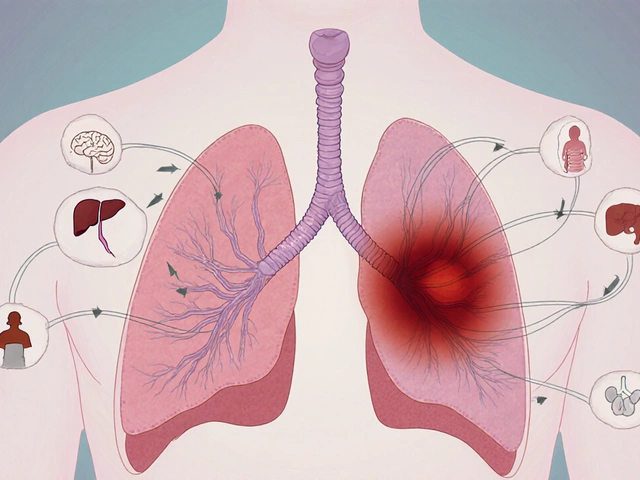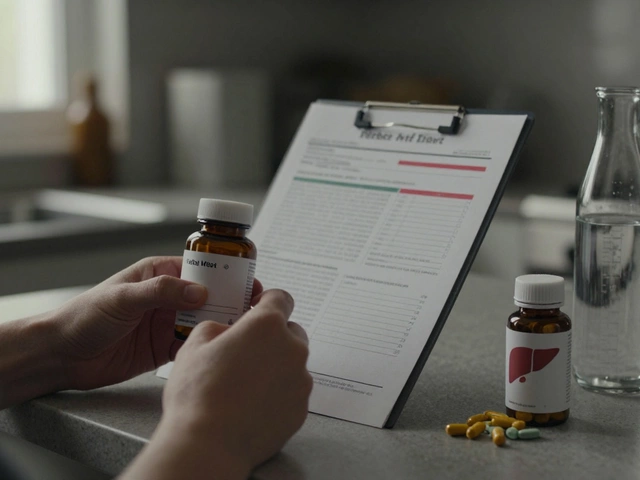- Home
- Mental Health
- Exploring the 5 Levels of ADHD: A Practical Guide

Exploring the 5 Levels of ADHD: A Practical Guide
ADHD, or Attention Deficit Hyperactivity Disorder, affects millions of people worldwide, yet there's still so much mystery surrounding it. Why do some people seem more affected than others? The idea of 'levels' of ADHD can help break it down. These levels give us a framework to understand how symptoms can vary widely from one person to another.
First off, what are these levels? Think of them as a spectrum. Some folks have mild symptoms that barely disrupt daily activities, while others might face significant challenges. Each level comes with its own set of traits and hurdles. Getting to grips with these levels can make a massive difference in how one navigates their own or a loved one’s experience with ADHD.
Stay tuned as we dive into the different levels and unpack what each one looks like in everyday life. Whether you're seeking to support someone with ADHD or figuring it out yourself, a little understanding goes a long way.
Understanding the Basics
ADHD stands for Attention Deficit Hyperactivity Disorder, and it’s more common than you might think. About 5% of children and 2.5% of adults worldwide are believed to have it. These numbers might be higher since many cases go undiagnosed. Knowing how it works is the first step to managing it.
Put simply, ADHD affects how people pay attention, sit still, and control their impulses. These traits sound straightforward, but in reality, they can complicate life in big ways. From achieving good grades in school to maintaining friendships or holding down a job, these symptoms can tug at every part of life.
The Core Symptoms
There are three main symptoms to keep an eye on: inattention, hyperactivity, and impulsivity. They don’t always show up in the same way. Some people might be daydreamers, always drifting during conversations or forgetting small details. Others might be like a whirlwind, full of energy and finding it hard to sit still.
- Inattention - This is when focusing on tasks or organizing activities feels next to impossible. Things like making careless mistakes or losing important items happen often.
- Hyperactivity - This looks like constant fidgeting, talking up a storm, or having a hard time playing quietly.
- Impulsivity - Acting without thinking through the consequences. Interrupting others or making hasty decisions can be examples.
Why Levels Matter
Understanding the ADHD levels can really help tailor the approach to managing symptoms. Whether through therapy, lifestyle changes, or medication, knowing the level informs the best strategy. It's not about labeling but recognizing what unique support someone might need to thrive.
| Symptom Category | Common Challenges |
|---|---|
| Inattention | Struggling to stay on task, forgetfulness |
| Hyperactivity | Difficulty sitting still, excessive talking |
| Impulsivity | Interrupting others, acting without thinking |
Having this basic understanding makes navigating through the maze of ADHD symptoms a little less daunting and goes a long way in supporting those who live with it.
The Five Levels of ADHD
So let's break down what we mean by levels. ADHD isn't a one-size-fits-all condition, and understanding these levels could be the key to custom-tailoring the best management strategy. People often think of ADHD as just attention issues or hyperactivity, but there's a lot more going on.
Mild Level
At the mild level, individuals might just seem a bit more distracted than others. They might frequently lose track of what they're doing, but it's usually manageable. In many cases, these folks can focus if truly interested in the task, so it's more about learning what grabs their attention.
Moderate Level
Moving up a notch, moderate ADHD can make focusing a daily battle. Tasks pile up because starting or finishing them feels like climbing a mountain. These individuals may benefit significantly from structure and routines to anchor them throughout the day.
Severe Level
Severe ADHD is where things get really challenging. We're talking about potential disruptions in both personal and professional life. It's tough for individuals here to stick to even well-laid plans, and working or learning environments may need significant adjustments.
Very Severe Level
At this point, ADHD can be almost crippling. The person might need constant support to manage daily living. Medications and therapy often play a crucial role in helping them keep their head above water. Here, family support and understanding are vital in aiding the individual's functionality.
Extreme Level
This is the most debilitating form, where consistent care is often a necessity. At this stage, routine tasks and social interactions can seem daunting and overwhelming. It's not just about managing symptoms but creating an environment where the person can thrive amidst them.
Understanding these ADHD levels helps in crafting effective and personalized treatment plans. It’s not merely about medication but looking at the unique fingerprint of ADHD in each person. These insights empower individuals and their support networks to create an atmosphere conducive to growth and success.
| Level | Characteristic Trait | Support Needed |
|---|---|---|
| Mild | Occasional distraction | Minimal adjustments |
| Moderate | Frequent distraction and forgetfulness | Structured routines |
| Severe | Significant disruptions in daily tasks | Environmental modifications |
| Very Severe | High levels of dysfunction | Therapy and family support |
| Extreme | Completely overwhelming | Consistent and comprehensive care |

Living with ADHD
So, what's life really like for someone with ADHD? The truth is, it can be both challenging and rewarding. Understanding and adapting to this condition is key to thriving. Let's break down what it means to live with ADHD and what supports can make this journey smoother.
Recognizing Challenges
ADHD often comes with trouble focusing, impulsive actions, and sometimes a whirlwind of thoughts that are hard to organize. This can make tasks like studying or working a bit tricky. But it's not just about struggles. Many people with ADHD showcase incredible creativity and out-of-the-box thinking—skills that are much-needed whether you’re brainstorming in a classroom or solving problems at work.
Getting Support
Finding the right support can make all the difference. Typically, a mix of treatments works best, including medication, behavior therapy, or a combination of both. It's important to keep communication open with healthcare providers to tailor a plan that suits individual needs. There are also ADHD support groups, where sharing experiences and connecting with others proves invaluable.
Practical Tips
Staying organized is often one of the biggest hurdles. Here's a helpful checklist:
- Use planners or digital apps to jot down tasks and deadlines.
- Break tasks into smaller, manageable chunks to avoid feeling overwhelmed.
- Implement time-management strategies like using timers to keep track of activities.
- Reduce distractions in workspaces. This means setting phones aside if they're not part of the task.
Understanding the power of routine is another game-changer. Many with ADHD find comfort and efficiency in established routines, which provide much-needed structure to the day. It's all about finding what works best for each person.
Living with ADHD can bring about a unique set of challenges, but it also spurs personal growth, resilience, and innovation. The idea is to use these experiences to cultivate a lifestyle that plays to your strengths and adapts to your needs.
Tips for Management
Living with ADHD can be a bit like being on a roller coaster. But with the right strategies, this ride can be smoother. Here are some practical ways to manage the symptoms and make day-to-day life a bit easier for those with attention disorder.
Create a Daily Routine
Routines are game-changers for anyone, but especially so for those with ADHD. Establish a consistent daily schedule, write it down, and keep it somewhere visible. Having a set pattern reduces chaos and helps in knowing what to expect. A simple calendar or even sticky notes can make a world of difference.
Break Tasks into Smaller Steps
Got a mountain of a task? Chop it into smaller, manageable chunks. Instead of tackling everything at once, focus on one piece at a time. This approach makes tasks less overwhelming and provides a sense of accomplishment as you tick them off the list.
Use Technology to Your Advantage
There’s an app for everything these days, including managing ADHD symptoms. Apps for reminders, focus timers, and task lists can help in staying organized and prompt you to take breaks or switch tasks. Embrace these digital tools—they can be lifesavers.
Mindfulness and Relaxation Techniques
Mindfulness exercises and other relaxation techniques like deep breathing or yoga can help calm the mind and reduce stress. Even just a few minutes each day can provide clarity and better focus. Try integrating these practices into your routine for a clearer mindset.
Regular Physical Activity
Exercise isn’t just good for the body; it works wonders for the mind too. Physical activity boosts dopamine levels, which can improve attention and mood in people with ADHD. Whether it's a morning jog, a quick dance, or a relaxing walk, staying active is a key part of managing ADHD symptoms.
Implement these tips, and you might just find a new rhythm that makes managing ADHD a little more manageable. Remember, it's about finding what works for you and sticking with it.

Arnav Singh
I am a health expert with a focus on medicine-related topics in India. My work involves researching and writing articles that aim to inform and educate readers about health and wellness practices. I enjoy exploring the intersections of traditional and modern medicine and how they impact healthcare in the Indian context. Writing for various health magazines and platforms allows me to share my insights with a wider audience.
About
Medical Resource Center India is a comprehensive online platform dedicated to providing reliable health information and medical resources in India. Explore a wide range of articles, tips, and advice on medicine, healthcare services, and wellness. Stay informed about the latest developments in Indian medicine and access valuable insights into maintaining a healthy lifestyle. Discover expert guidance and health solutions tailored for every Indian citizen. Your go-to destination for authoritative medical knowledge in India.








